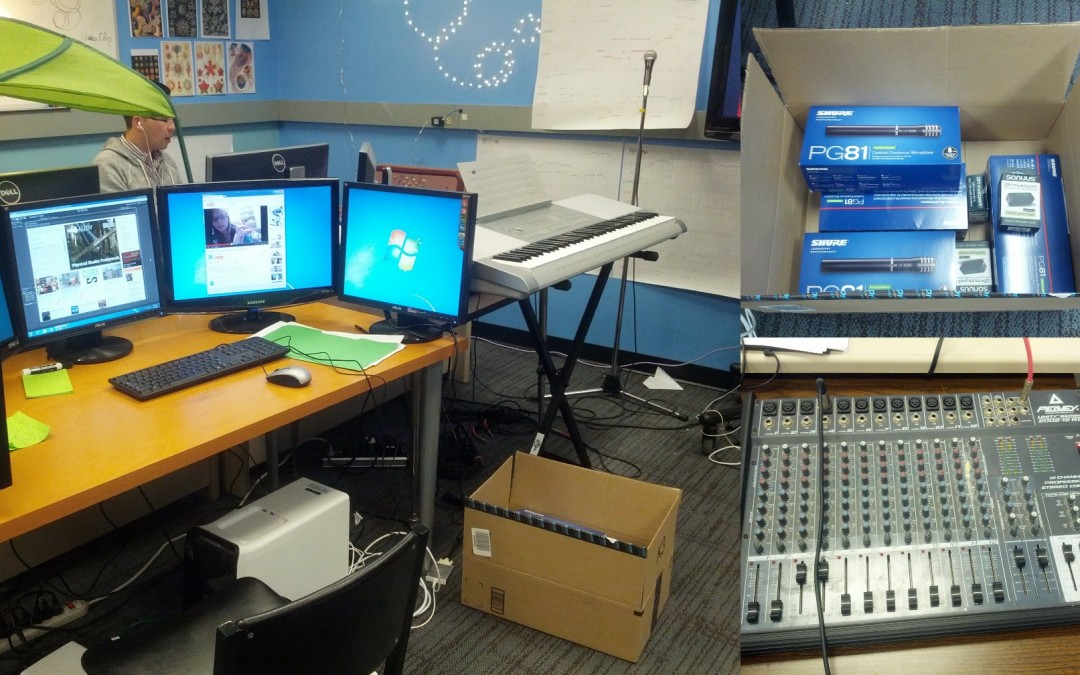
by Himanshu Vartak | Feb 23, 2014 | Newsletter
Our first week after quarters, we took a little time to recoup. We got quite some valuable feedback from the quarters, something we as a team had to pore over and address some of the issues raised. We revisited the storyboard and the our visual concepts and tried to figure out how to move ahead from the prototype that we had. Our art team began making solid concepts for the visuals that we will be seeing on screen. While the artwork is something that will constantly be evolving, it was a good place for the tech team to start from. The other major deliverable we had from the ETC standpoint was our project’s website. While part of the programming team concentrated on researching and trying out new mechanisms that we could use for our performances, Victor, along with Nayoung and Christina, set to work on the project website. A perfect marriage of tech and art, the website came together by the end of the week. Christina and Nayoung also together and began work on the virtual instrument design for our visualization. Christina shared her musical expertise and guided Nayoung about the intricacies of each woodwind instrument, mentioning which key on the instrument would be used. This will help Nayoung in creating the virtual instrument concepts by early next week. We got cracking on getting our equipment. We identified all the sound equipment we would require and started requesting for them to be purchased. We also requested for a dedicated system that could support 5 screens, thus allowing us to simulate our eventual system for the final performance. This would...
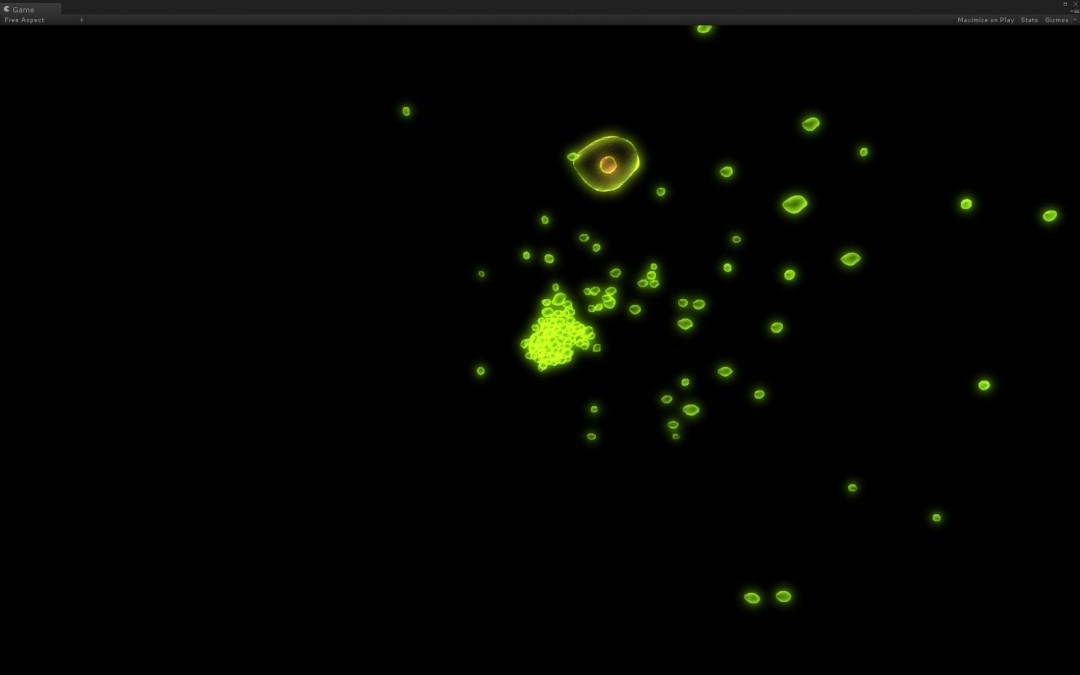
by Himanshu Vartak | Feb 20, 2014 | Newsletter
This was quarters week. While we were still moving towards overall progress, most of our efforts were directed towards the quarters at the end of the week. Having the quarters at the end of the week helped us in a way such that we could actually work towards our progress which would also be what we would show at quarters. We were primarily focussing on creating a working prototype which we could exhibit at quarters. This week we got hold of some of the equipment we required to begin our work. We received the first sound to MIDI converter and tested it to see if it really works. Victor began by making a simple prototype where he could identify every single that could be played. We had some faculty and students have fun with this prototype; Jesse Schell even played his harmonica and the system could recognise each single note. The art team worked on creating a storyboard for our narrative. Nayoung picked out some reference images for the same and built a narrative that matched the four movements. We had a detailed discussion about the flow of the narrative and how each movement represents a portion of the great cycle of life and death. With this in place, our artist began working on concept art for the stage setup and how our visuals would look on screen. We also managed to have our client, Dr. Thomas come down to the ETC and see the progress that we’ve been making. She was very appreciative of the visuals and the idea of having a narrative through the four pieces and...
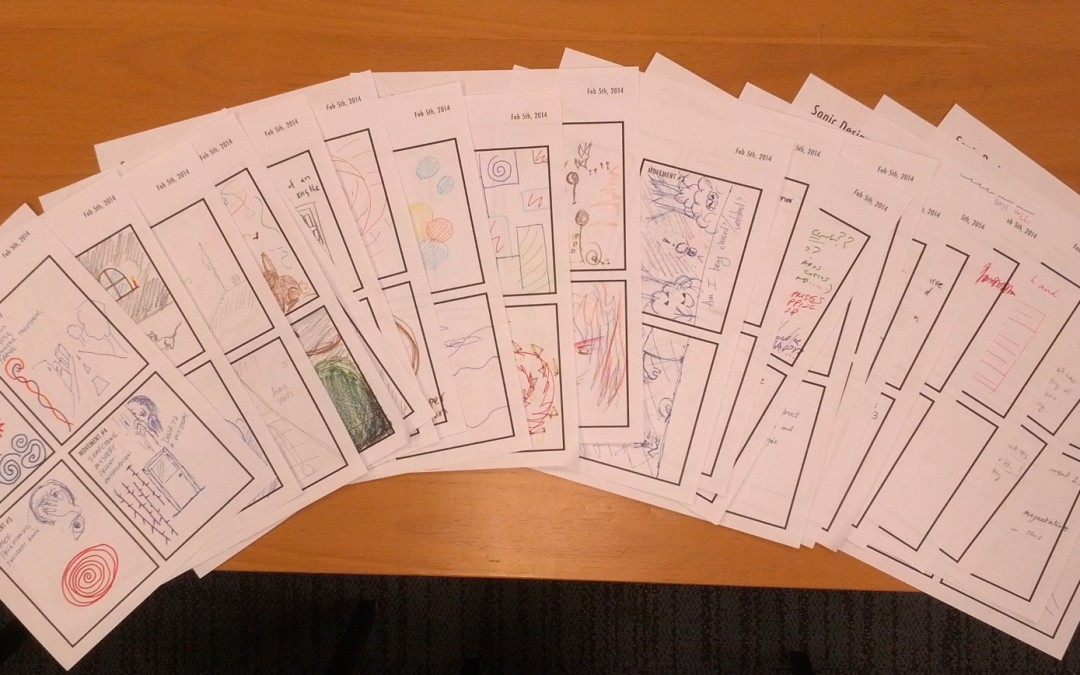
by Himanshu Vartak | Feb 10, 2014 | Newsletter
The penultimate week before quarters, this week we concentrated on giving our deliverable direction. To this end, we identified what equipment we would be requiring to successfully input analog sound and convert it to MIDI signals. We debated for a while if we actually needed to get MIDI signals or if we could do with pulling pitch and amplitude of the music being played. Internally in the team we decided that converting sound to MIDI signals would give us more freedom to play with the music, as then we would be able to identify each note. Once again, we got in touch with Dave Purta who helped us in identifying portable equipment that could convert analog sound to MIDI signals. We also contacted Prof. Riccardo Schulz at the School of Music to get his recommendations and opinions about the equipment we should use. Monday was a busy day. We started the week by shooting for our team photo. It was an enjoyable experience, as we got to play around and pose in the green screen room. On the same day, we had a branding critique, where we got feedback on the posters and half-sheet designs that Nayoung had made. They were much appreciated with only minor feedback about text. We also attended a playtesting workshop hosted by Jessica Hammer, where we learnt many valuable tips and tricks on how to conduct a workshop. Seeing how playtesting would be a great guide for us in the coming weeks, this session was very informative. Christina made MIDI mock-ups for all the four movements, with quick turnaround. She also started work on analysing...
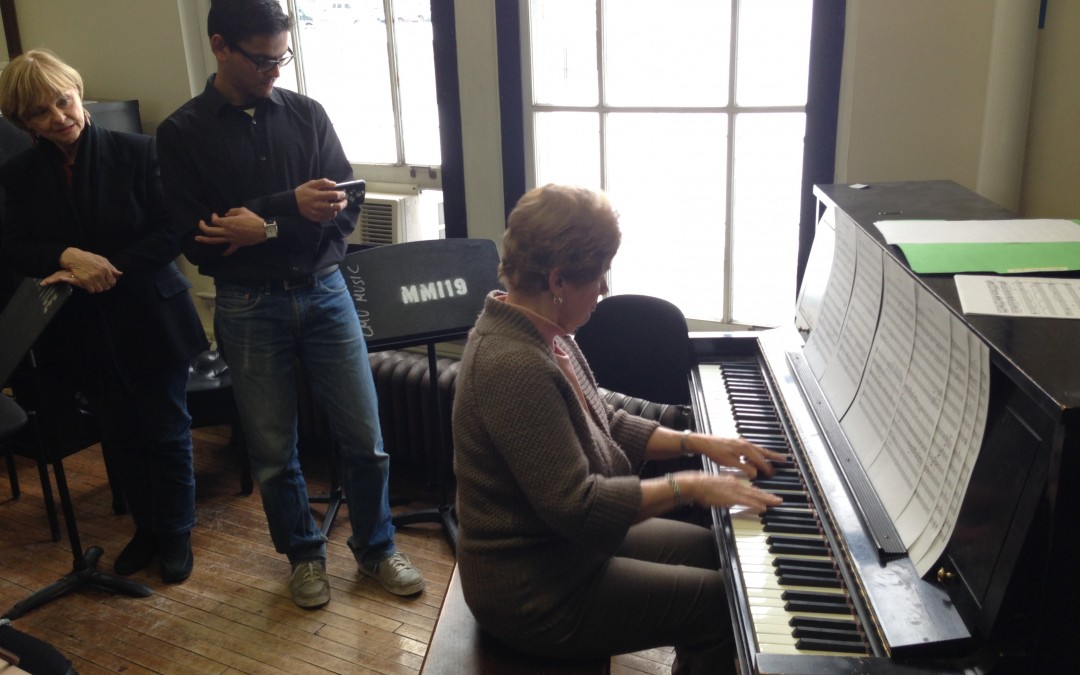
by Himanshu Vartak | Feb 10, 2014 | Newsletter
This week has been in a bit of a flux for the team. We, as a team, are still trying to figure out exactly what we are going to create as our deliverable. We’re still in the blue sky phase, but our technical research is ongoing. We got hold of our decorations for the room and began decorating our room with posters and lights. This will be an ongoing process for us as we will continue to add more artwork as we create art for the project. After analysing Dr. Thomas’ last email, we as a team, had a few internal questions about we wanted to achieve. Having decided right from the start that we wanted to create something more than just a graphic visualizer, we asked ourselves how we can make the experience more than just that. We researched about different technologies such as Myo gesture control, a band that can be worn on the hands and read your muscle movements, and considered using the Makey Makey. We were thinking about making the experience more than just about listening to music, but make it about the experience of creating music. We thought it would be interesting to pull data from the musicians themselves, such as their heart rate, or muscle movements and incorporate that into the visual experience. We presented a more concentrated approach to the deliverable to Dr. Thomas. We introduced these ideas to her and presented her an ‘ecosystem’ idea, where different cellular creatures represented each instrument. Dr. Thomas was very enthused about this sort of setting, giving us freedom to use any sort of technology...
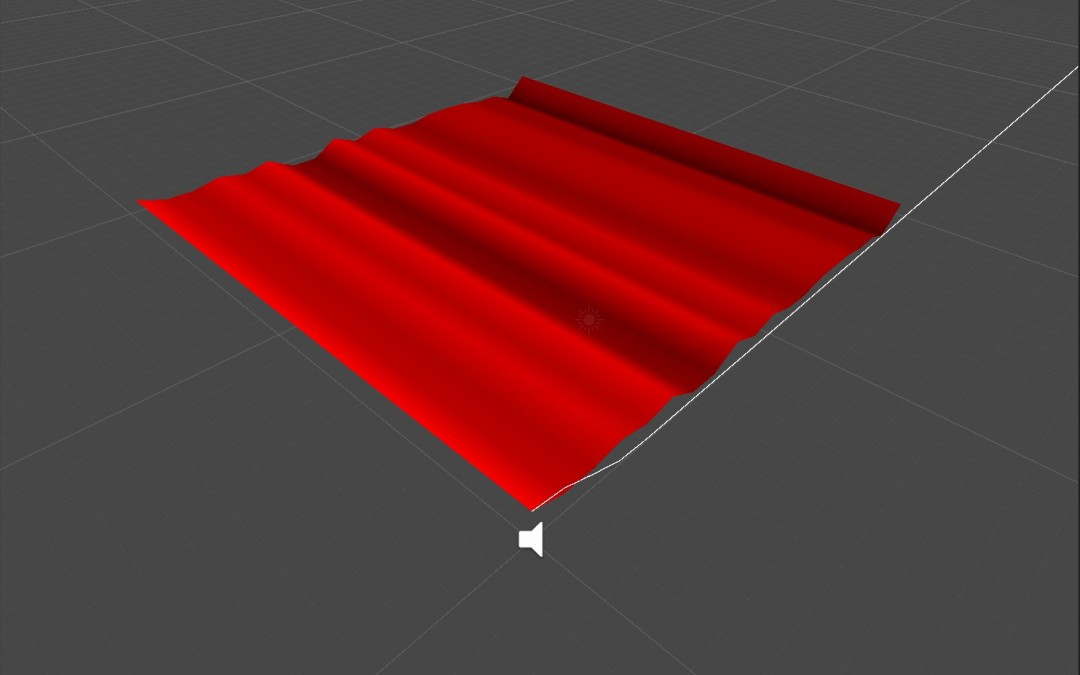
by Himanshu Vartak | Feb 10, 2014 | Newsletter
We resumed the second week carrying forward the momentum from out first week. Having worked over the weekend on the various ideas we would present Dr. Thomas, we first presented these ideas to our advisors, John and Shirley to get their feedback about them. They advised us not to restrict our scope and present as many diverse ideas as possible. We also met with Jesse Schell, who mentioned that one of the basic hurdles to cross is to convince the audience that whatever visuals they are watching are being created at real-time and are not pre-rendered. He also advised us to keep whatever we do simple, yet innovative and interesting. On Tuesday, January 21, we presented our client with our multitude of ideas via Skype. While Dr. Thomas was overwhelmed with our entire repertoire of ideas, she expressed interest and enthusiasm in pursuing most of the ideas. One of the ideas that she wasn’t very enthusiastic about was about having the musicians moving about, driving a live camera feed. On Wednesday, we got to see our first basic visual prototype, courtesy Victor. We could see our vocals or a piece of music driving a 3D cloth model in real-time. This proved that our basic goal to convert sound into electronic signals was achievable and that we could go further ahead from here. We also had a branding review, where our artist Nayoung exhibited some of her concepts and we collectively gave her some constructive feedback. We also received an interesting email from our client, Dr. Thomas, wherein she further expanded her reaction to our ideas and gave us some...







Recent Comments